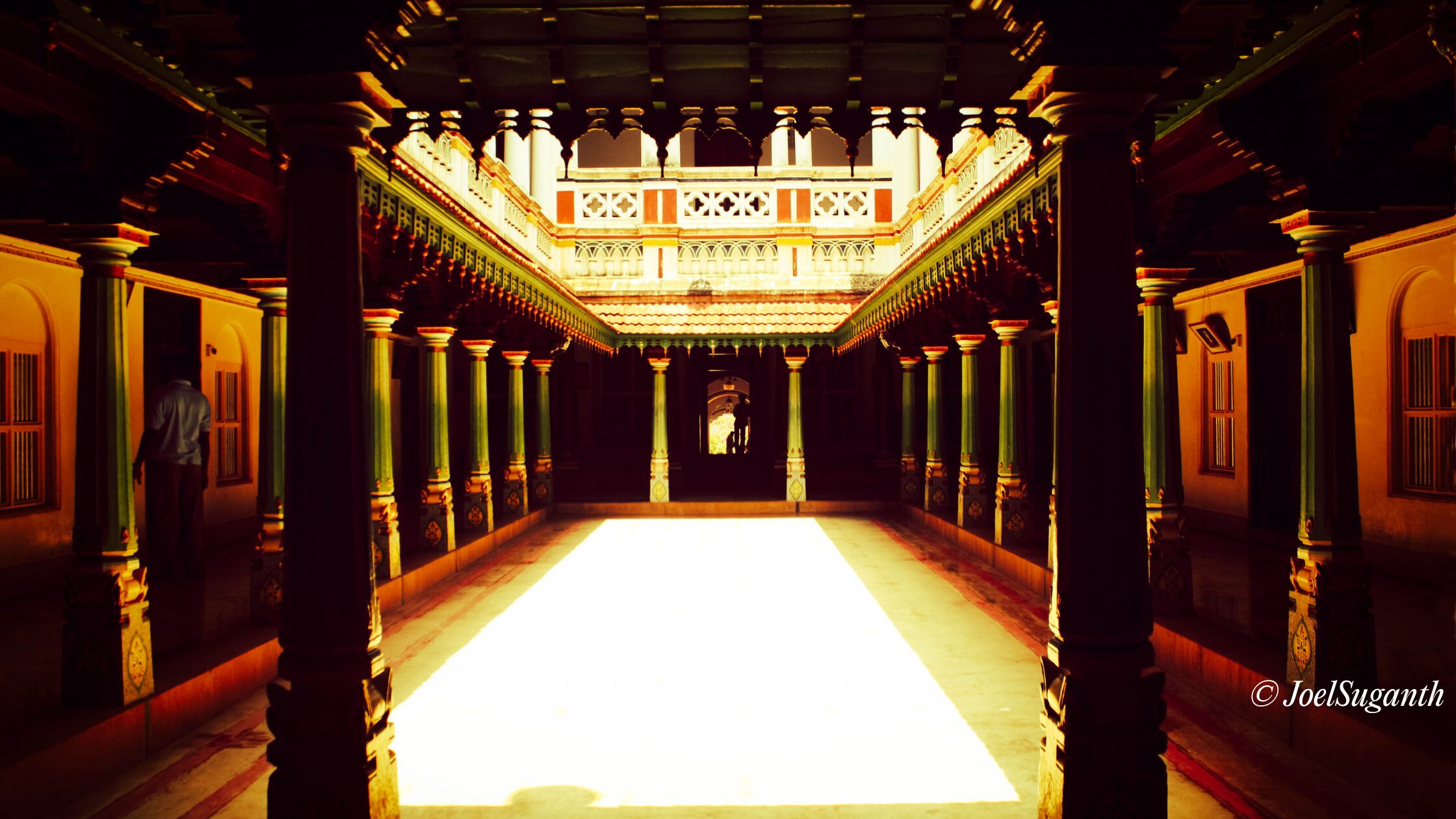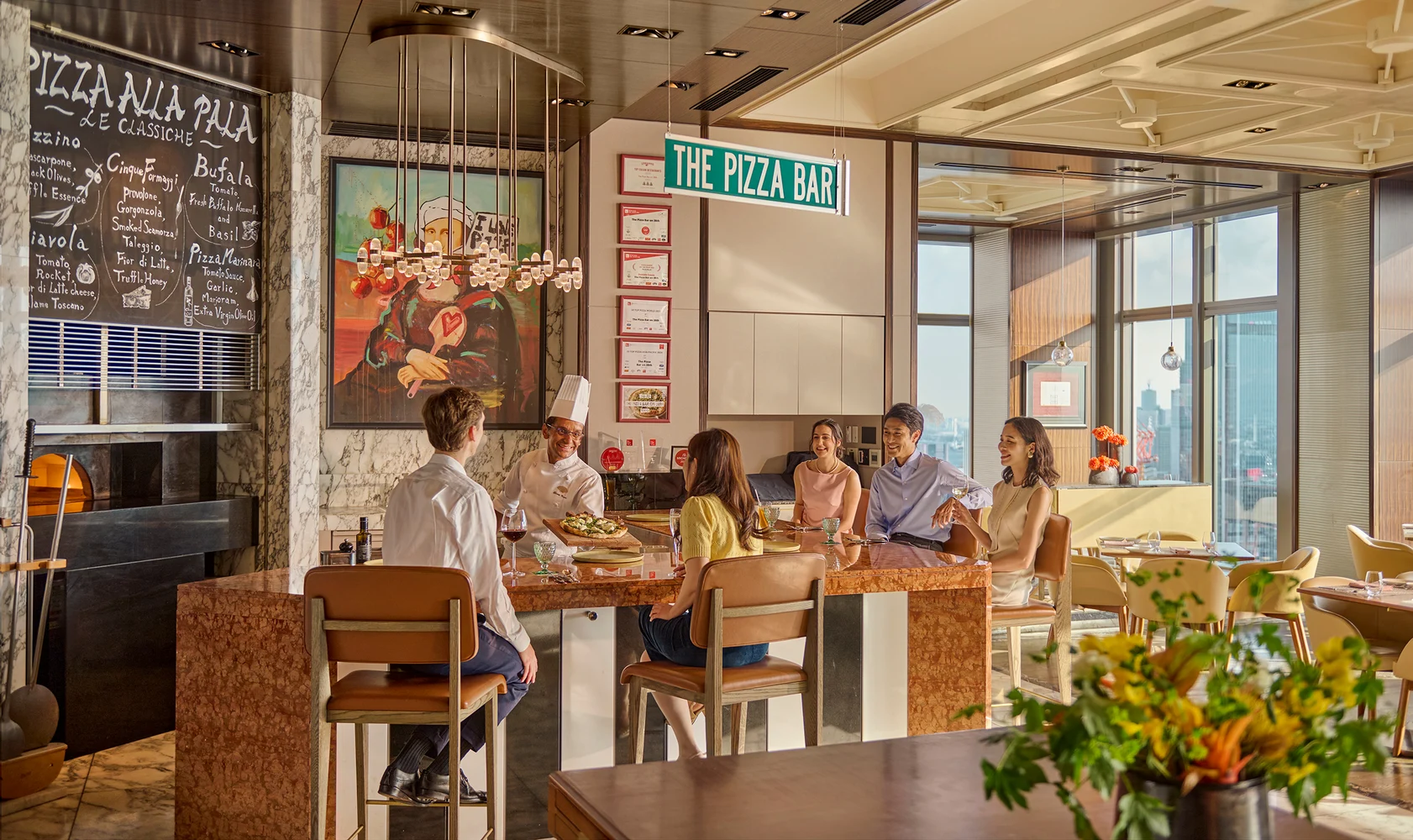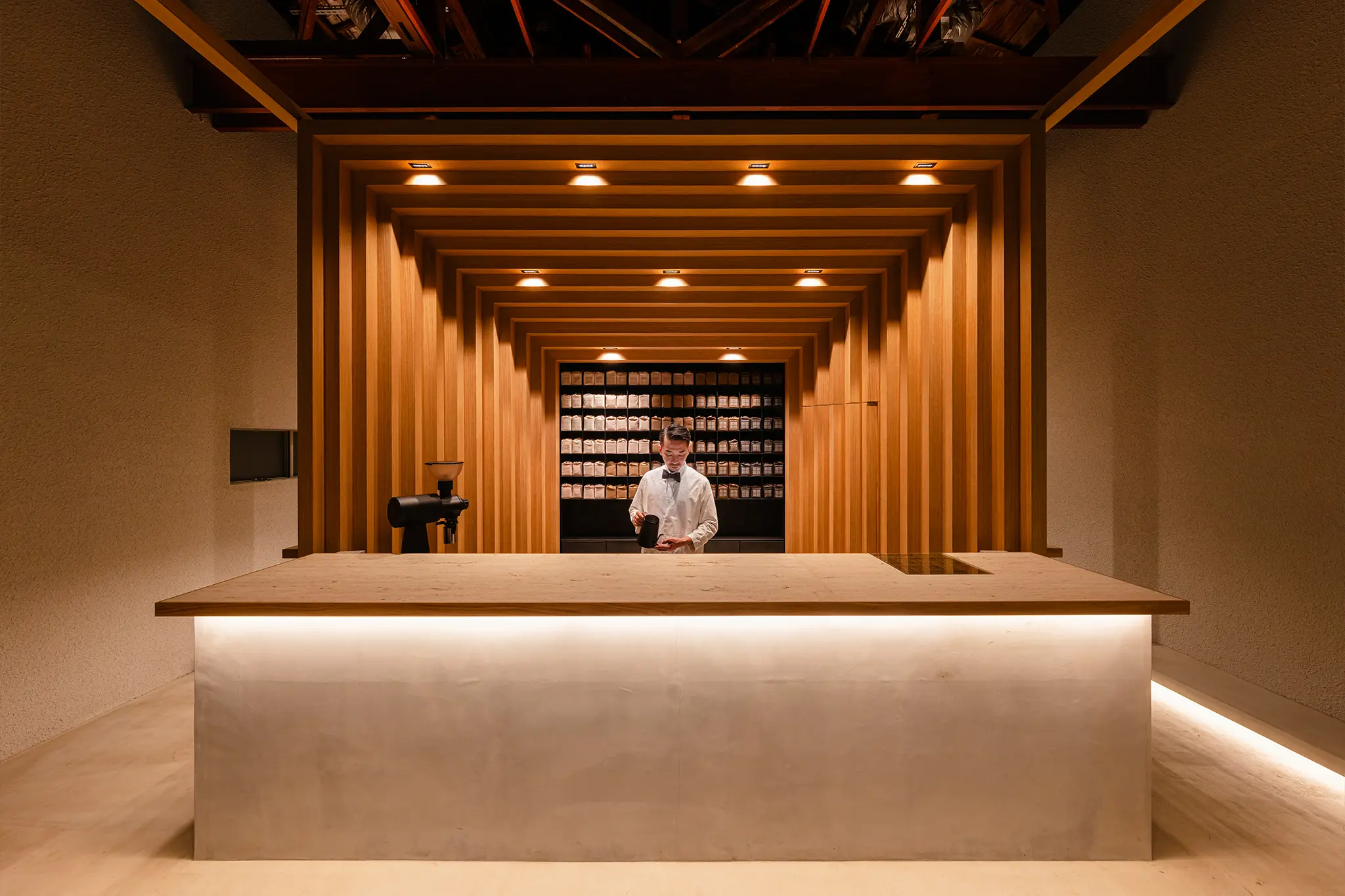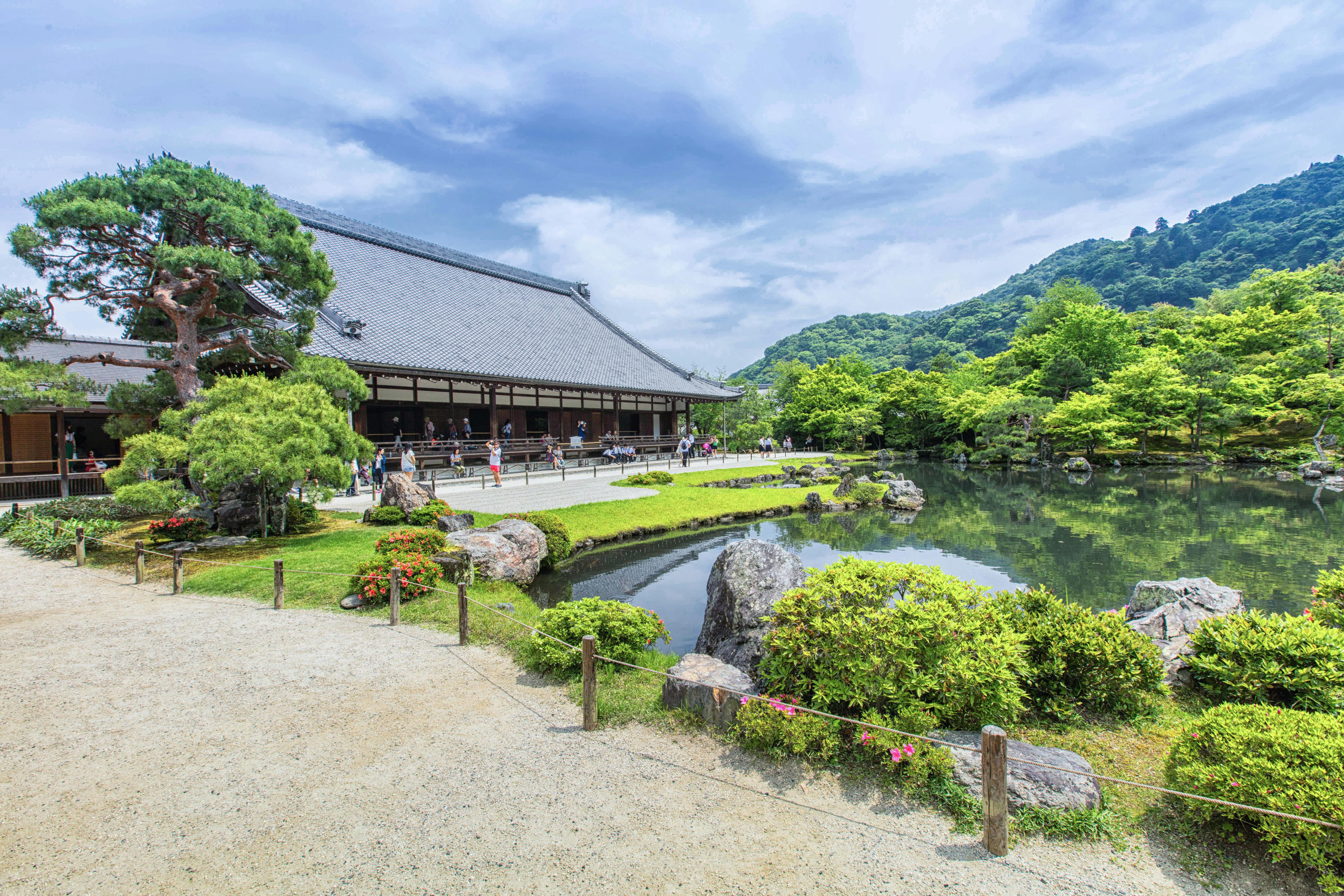Chettinad serves up a heritage feast: teak mansions, spicy kitchens, impressive lineages, and artful tiles for seekers of discreet, timeless luxury.
“Sixty-six rooms? It’s a palace.”
“No,” our guide Siva shrugged, half-smiling, “it’s a house.”
We stood in front of Athangudi Palace, one of Chettinad’s most elaborate mansions. Once the prosperous seat of Tamil merchant princes, this corner of South India tells a tale of prosperity, deterioration, and resurrection.
For Siva, who grew up among such homes, the scale of Chettinad’s mansions had long stopped being extraordinary. Many locals now work as caretakers or guides, keeping these empty, echoing houses alive in their own quiet way.
In this story, follow along as we trace Chettinad’s past and present: the architecture built on global ambition, the artisans who keep its craft breathing, the flavourful cuisines food that defines its opulent past. And, what makes this region perfect for intimate celebrations, reflective retreats, and lovers of conscious luxury alike.
The pull of Chettinad
Chettinad doesn’t announce itself with pointy minarets, expansive forts, or gold domes. Its opulence whispers in craft; massive sun-lit courtyards, intricate teak detailing, polished lime and egg shell walls, handmade tiles, and rich cuisine.
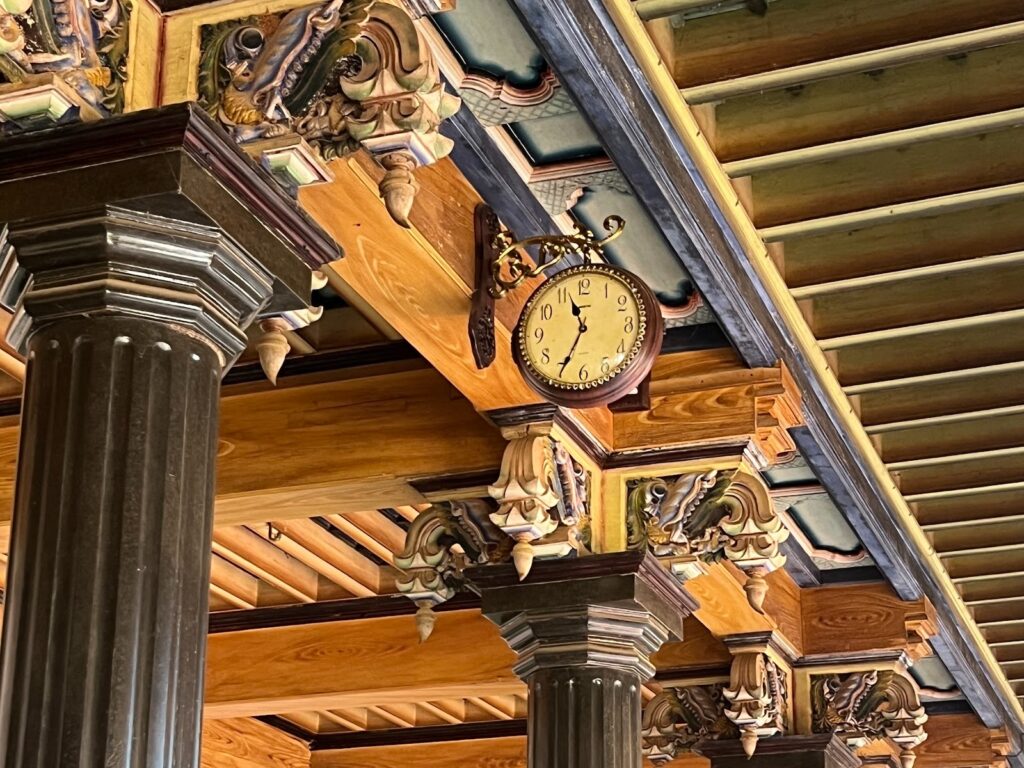
a colonial-era Swiss clock. The elements showcase both the technical mastery and global
reach of Chettinad’s builders. Photo by: Rayhaan Imam
Over 11,000 mansions rose here from the late-19th to mid-20th centuries, built by the Nattukottai Chettiar merchants. After being displaced by a coastal tsunami, they moved inland from the Coromandel Coast and made fortunes in Burma, Sri Lanka, and Southeast Asia.
With wealth came refinement. The mansions are adorned with Burmese teak ceilings, jet black Italian marble pillars, Belgian mirrors, Moroccan chandeliers, Indian ivory, Indonesian crockery, and Murano glass that has reflected light for a hundred summers. Neighbouring villages pioneered the uniquely beautiful Athangudi tiles, which have become famous world over. But grandeur has, invariably, faded. Roughly 30% of the mansions have crumbled. Of those that remain, barely a fifth are tended lovingly, while ownership tussles stall restoration. One house may have dozens of heirs scattered across continents, making it impossible for hotel groups to negotiate a clear sale. Just finding all the signatures can take decades.
Reviving Chettinad means reviving its artistry — tile makers, egg‑plaster masons, and storytellers. Fewer than 10% of mansions have received tourist makeovers. Yet optimism persists. Architects and heritage heirs are rebuilding one façade at a time. Tourism, done thoughtfully, may well be the bridge between ruin and rebirth.
Getting there and where to stay
We flew from Bengaluru to Madurai, a quick 90-minute hop, with a dozen flights run daily by IndiGo and Air India. Alternatively, you could also fly into Trichy Airport, which is equidistant to the heart of Chettinad.
From the modest Madurai Airport, a two‑hour (90km) drive led us to Kanadukathan, home to Visalam, our yellow‑washed base — respectfully restored by CGH Earth Hotel Group — for a three‑day Chettinad immersion. At first glance, Visalam gleams like a buttercup-yellow art deco dream. Inside,15 large teak-laden rooms recall a bygone era of quiet luxury. CGH Earth employs over 50% local community members at their properties, showing how hospitality and heritage preservation go hand in hand.
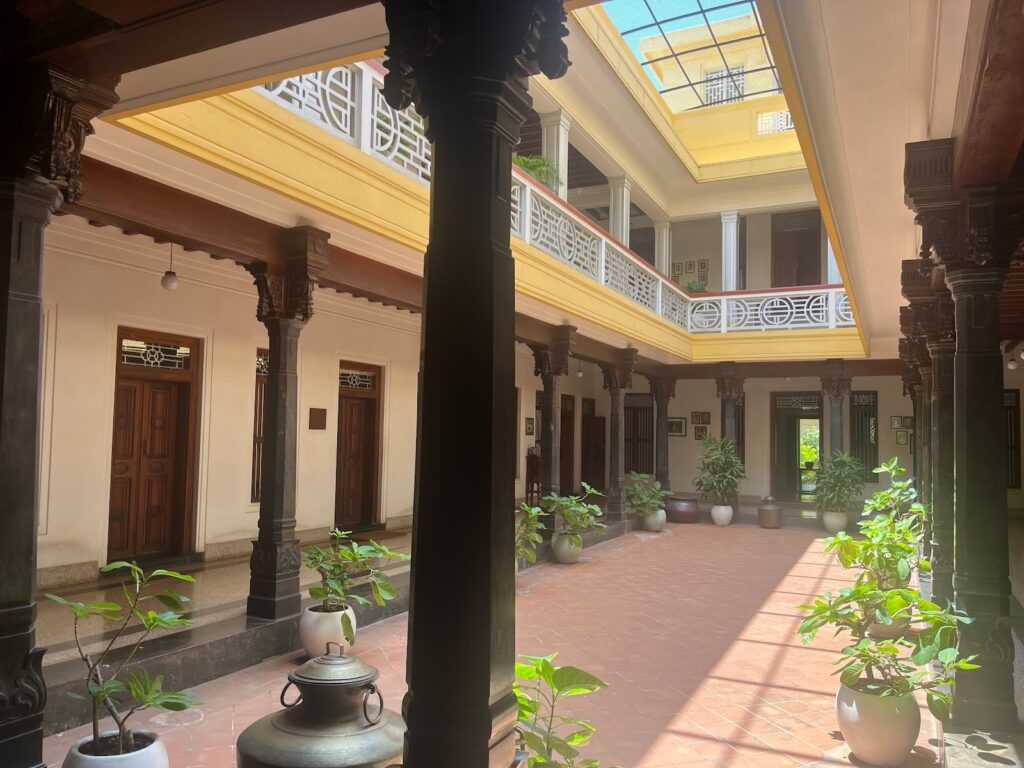
by polished pillars and rooms. Here, gatherings, rituals and quiet moments still unfold
under the gaze of ancestral portraits.
What to do in Chettinad
- Mansion heritage tours: Our guide Siva hosted a half‑day CGH Earth heritage tour that braided architecture, artisanship, and belief. We saw the Kanadukathan Palace, Athangudi Palace, and the still lived-in VVR Mansion.
- Athangudi tile workshop: We stopped at an Athangudi tile‑making workshop, where artisans mixed river silt, white cement, and coloured oxides, then dried tiles in air, water, and sun. They finished them with rice‑husk polish, which is a sustainable process unchanged for generations. The gentleman giving us a demo of the tile-making process had been making these tiles since he was 12, and has been doing so for 40 years.
- Temple run: Near Visalam stands the Jayakonda Choleeshwarar Temple, devoted to Lord Shiva and Goddess Soundara Nayaki. It’s notable for its five gopurams rising like a stone crown. On our journey back to Madurai, we paused at the Meenakshi Amman Temple, its ten gopurams sheathed in scaffolding. “Election season,” our express-darshan guide chuckled; the towers always get their facelift just before the polls.
- Antique shopping: Chettinad is a treasure trove for antique lovers. Wander the markets and family shops and discover vintage furniture, colonial-era artifacts, antique jewellery, and heirloom crafts sourced from the mansions themselves. Many families are now turning their centuries-old possessions into collectible curios. It’s perfect for travellers looking to take home of Chettinad’s opulent past.
- Chettinad cuisine: We rushed through check‑in at Visalam only to reach its heart — the dining hall lined with the tinpots from the owner’s dowry. A washed banana leaf appeared; dishes arrived like percussion, surrounding a hill of white rice. The star of the meal: Pineapple Pachadi, tangy and cooling. Meen Varuval, a Chettinad‑style grilled garfish (locally called Kola Meen) marinated in pepper, fennel, and garlic, Aadu Kari Nei Roast, lamb luxuriated in ghee, and Melagu Kozhi, pepper‑seared chicken. Each bite an explosion of flavour, and a reminder that the Chettiyars lived well (and rightly so!)
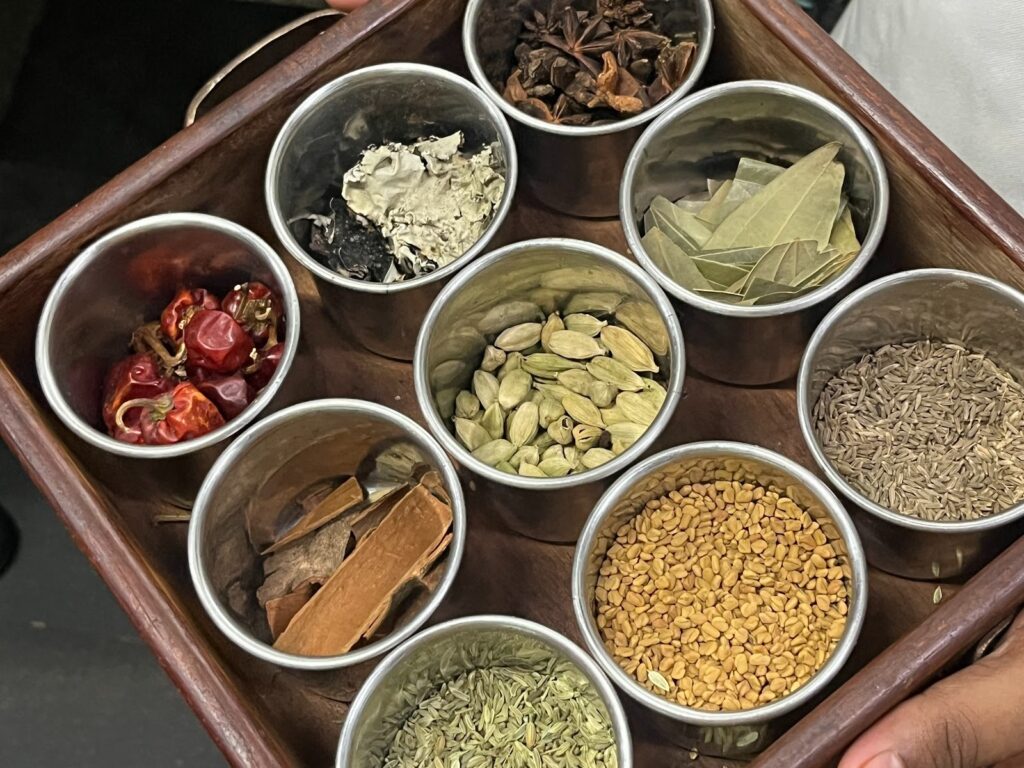
fennel, bay leaf, cardamom, clove, and cumin — the aromatic backbone of the region’s
legendary cuisine.
Who Chettinad is for
Families: Perfect for small celebrations where history feels personal. These are after all, heritage homes. Ideal intimate venues filled with ancestral charm.
Executives and creative teams: Ideal for leadership retreats that seek reflection amid quiet grandeur.
Aesthetes and culture lovers: For travellers drawn to architecture, craft, and cuisine more than crowds.
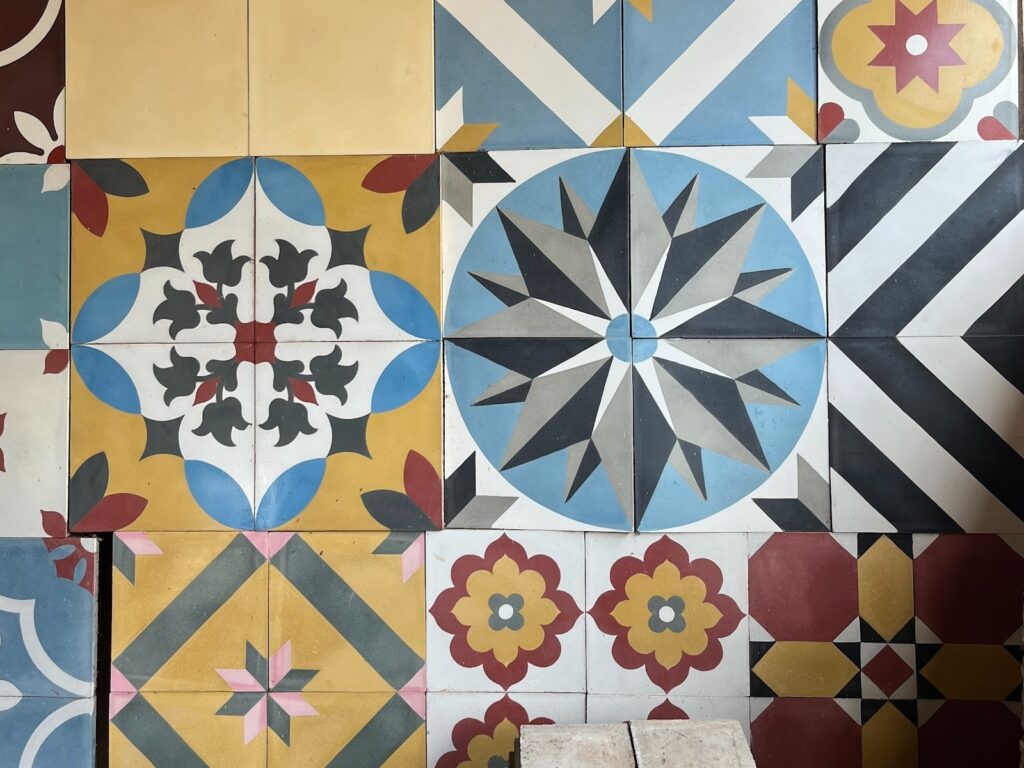
These bold geometric patterns, unique to Chettinad, bring living history to every
courtyard and hallway.
Why plan a Chettinad visit with Panache?
From tile workshops and whispering courtyards to lamp‑lit dinners in yellow palaces, Panache World curates immersive heritage journeys. Our partnership with CGH Earth gives us preferential rates at Visalam. We organize your flight tickets, charter luxury vehicles from Madurai and Trichy, and arrange local guides for visits to temples in the area.
Plan your Chettinad escape with Panache and let us handle your voyage into South India’s most elegant whisper of history.

